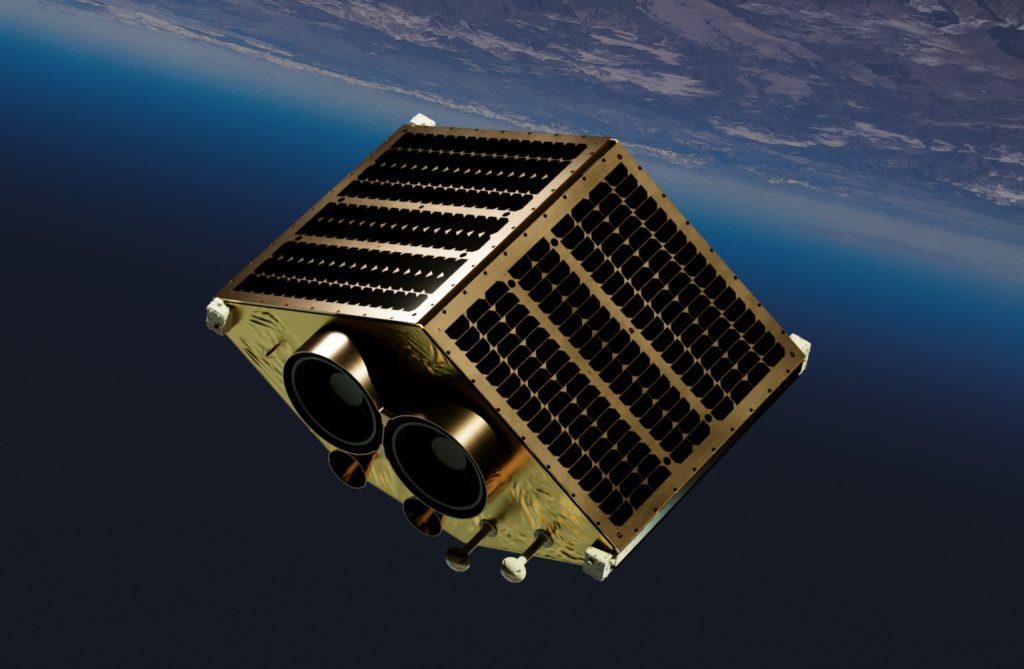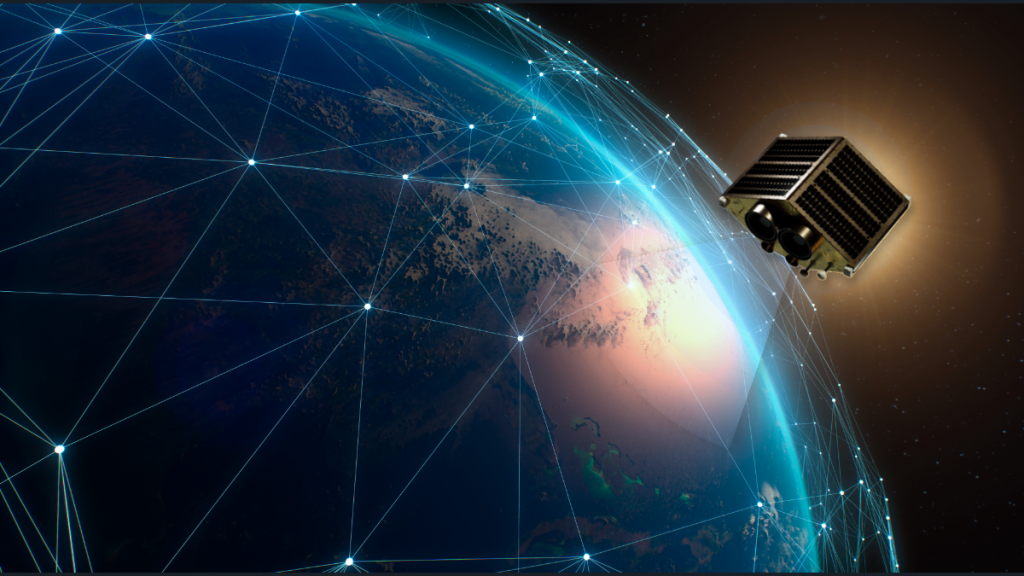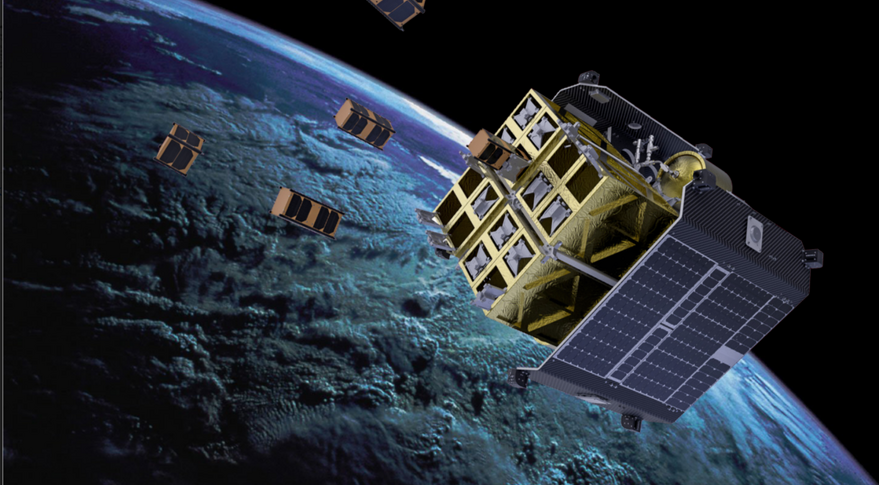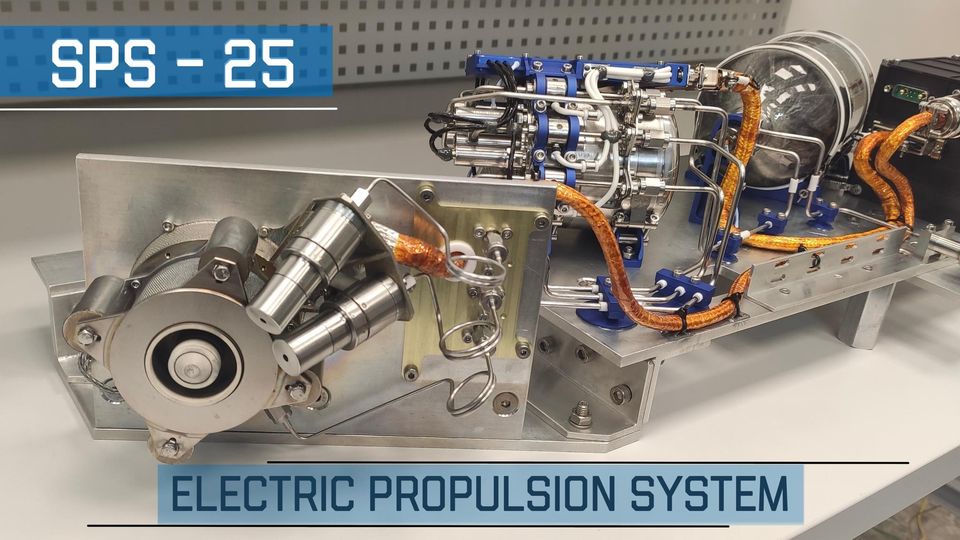Top Tech Trends Influencing Space and Earth Business in 2019
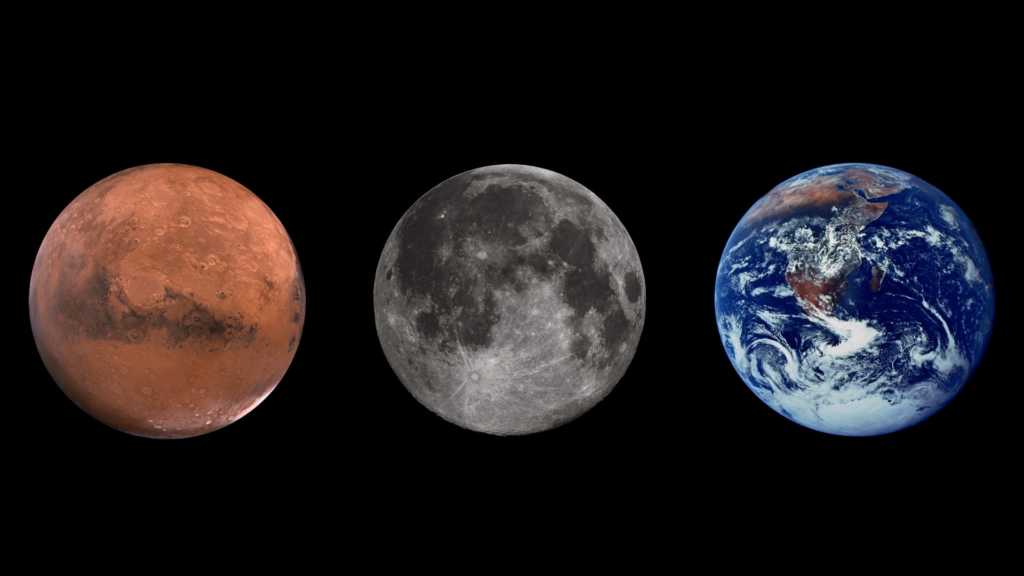
Sep 17, 2019
Dangers to Internet Security, AI applied to space science, machine learning in business operations and evolution of IoT — these are prominent tech trends for 2019 which will alter how we earn and search. We saw some of these in 2018, but new or not, all are relevant for 2019. Only one factor remains stable – development and influence of the space tech. One thing is certain — technologies will constantly develop, improve and advance to better suit customer purposes. Below are 2019’s four biggest tech trends to transform our habits and shape profits.
1. Experience reimagined. From personalization to hyperpersonalization
One of the most remarkable tendencies of 2019 is the trend of personalization: tech integrates with every home, watches over you while you sleep, monitors your health, and follows you to the bars, taxi and malls. Each interaction with customers enables businesses to collect new insights about buyers’ behaviour, which facilitates finding a better solution for focussed, successful interaction.
We traditionally think of personalizing content as something as simple as using a name in an email header. A hyper-personalized campaign, on the other hand, uses detailed data on views, purchases and real-time behaviour from a variety of informational sources to customize and tailor content, products and services for each user.
But retail and online business are not the ones, satellite data providers want to follow trends too. Thanks to the Deloitte Space industry perspective report we see that users of space data want dynamic, relatable engagements as well as insights. They want to know the count of the cars in the lot as well as the weather forecast in the most hands-off way possible.
“Data middlemen” — those who exploit, analyze, or distribute data — are poised to shatter current macro technology trends. Combining AI with terrestrial and space-based weather sensors has already enhanced weather forecasting and accuracy. A better understanding of the user base has facilitated the introduction of this data into smartphones and mobile apps.
Space data providers break beyond traditional approaches and collect information from customers to understand user trends and improve their experience. The more information they get, the more they can improve the ways customers interact with them.
2. 5G will become a reality
Nothing causes quite as much controversy in the mobile industry as the 5G network. During the second half of this decade, 5G was touted as a technology that marks the beginning of a truly ultra-fast mobile broadband connection.
Swedish telecommunications equipment maker Ericsson has published its forecast for fifth-generation (5G) mobile networks. The company expects that by 2024 there will be 1.9 billion connections to ultrafast networks in the world. That’s 27% more than previously predicted. AT&T, Verizon, and other telecom companies have already commenced coverage of 5G networks.
As governments, companies, and everyone in-between prepare to trade out 4G wireless infrastructure for 5G, questions linger about what the transition will entail. For satellite communications companies this switchover could be more daunting than any previous cellular transition.
The performance benchmarks for 5G wireless service are high: user download speeds of 100 megabits per second (Mbps) and uploads of 50 Mbps, with a maximum signal lag of only a millisecond. That’s five times faster than the average household internet connection in the United States and Europe, and 15 times faster than the global average. Add in a spectral efficiency triple that of 4G, meaning effectively triple the volume of data that can be sent using the same amount of spectrum, and you have a vastly improved network.
Satellites today are just starting to near those throughput markers — Viasat’s ViaSat-2 offers 100 Mbps download speeds and Eutelsat and Hughes are building similarly capable satellites — but none even approach a single millisecond of latency.
Fifth-generation networks also must be capable of supporting a million devices in a single square kilometer as well as maintain connections for mobile devices travelling up to 500 kilometers per hour.
Despite these challenges, satellite operators, analysts, and industry observers remain optimistic that space-based communications will play a significant role in connecting 5G devices.
The first approved specification of 5G networks appeared in 2018, along with relevant technologies which met the requirements. Although most of 2019 has been spent implementing and expanding test markets, and first 5G-enabled smartphones.
3. Voice assistants will become the norm
How often do you use the voice commands like search or assistant on your smartphone? According to Google, every year the number of voice-implemented searches grows exponentially; literally every fifth owner of a mobile device will initiate a voice search on random facts. Google experts say that by 2020 more than half of all Internet search requests will be performed using speech recognition technologies.
Today, each of the assistants has a sort of specialization, as well as inherent strengths and weaknesses. Unfortunately, there is no one grand best solution. Not to mention that despite all the talk of solidarity and cooperation, there is a virtual war for world market domination. The powerhouse leaders struggle for global dominance, among them are Amazon, Google, Apple, and Microsoft. In Asia, Alibaba and Xiaomi have leading positions.
According to an Uberall survey of 300 small to medium-sized U.S. business marketers, 48% say Amazon Alexa has the best marketing potential among voice assistants. Google Assistant was tagged as having the next most potential with 29%, followed by Apple’s Siri at 17%. Microsoft’s Cortana barely registered at 3%. Juniper analysts predict an increase in the number of devices in the U.S. equipped with this technology to reach 870 million by 2022.
But voice assistants pave the way not only in mass market and business analytics, but they also evolve in the specialized robots which can be used on the International Space Station (ISS) and spaceships. A great example is the CIMON (Crew Interactive Mobile Companion) assistant robot, which is a joint development of the European Space Agency, NASA and IBM. In 2018 CIMON was shipped to the ISS for testing its ability to help astronauts with routine tasks.
CIMON is designed to support astronauts in performing routine work, for example, by displaying procedures or offering solutions to problems (thanks to its AI network and ability to learn). The robot uses Watson AI technology from the IBM cloud and, with its face, voice and artificial intelligence become a genuine “colleague” for people.
4. The big deal with privacy
Recent Facebook’s political privacy scandals, the use of personal information for punitive or retaliatory reasons – these lead to the fact that people in 2019 realize the vital importance of that private data control. The behavior of the customers are changed and communication has moved from open walls to chats, privacy settings are set to “story for friends” and what we share with the world is being limited, while we share only with our closest friends. Of course, social networks are an endless unpredictable ocean, and these changes are just the main ones now.
A Forbes article by Bernhard Schroeder, Director at the Lavin Entrepreneurship Center, San Diego State University, states that “privacy will continue on a similar path as the evolution of cybersecurity. Data breaches and privacy-related incidents aren’t going away just because of General Data Protection Regulation (GDPR) and other laws, so expect a standard of constant privacy to become the new normal and for compliance to be a continuous exercise.”
The exact cautious situation is happening in defence and space industry. US Air Force is currently using defensive cyber operations (DCO) to protect, detect, and respond to attacks on operational ground systems. Massive next-generation satellite constellations provide resiliency, as well as become targets. As such, constellations require attention to cybersecurity just like large-scale terrestrial networks. Organisations securing the supply chain by leveraging trusted foundries, subsystem manufacturers and sensor suppliers.
That’s why in 2019, organizations will begin focusing on creating safe connections. Also, expect to see more companies address cloud security by moving away from public cloud formats and returning to the private cloud.
Conclusion
The days of “small” data have passed. Today, business is experiencing a Big Bang of data. Information is not just created or used by people — now data is actively collected, generated and analyzed by your watch, toaster, home and car, not to mention what happens to entire enterprises. Space and retail industry, automotive and local businesses — everyone integrating data management technologies with the aim to provide the best customer experience.
Follow our Facebook page to know more about space investment
Read more from Noosphere Ventures:
- SETS’ SPS-25 Propulsion System Proves Successful in Space Testing Despite Challenging Circumstances in Ukraine
- EOS Data Analytics launched EOS SAT-1, the first satellite of its EOS SAT constellation
- EOSDA And Ursa Space Entered Into An Agreement
- D-Orbit charts ambitious course for space logistics business
- SETS delivered 2nd SPS-25 Hall thrusters system for commercial mission
- D-Orbit wins contract to work on Space Rider reusable space vehicle
- EOSDA Contracted An Agreement With GEOSAT
- Noosphere Ventures LP to sell a major stake in Firefly Aerospace to AE Industrial Partners
- EOS SAT First Satellite Provided By Dragonfly Aerospace
- Firefly Aerospace is one step closer to landing on the Moon


